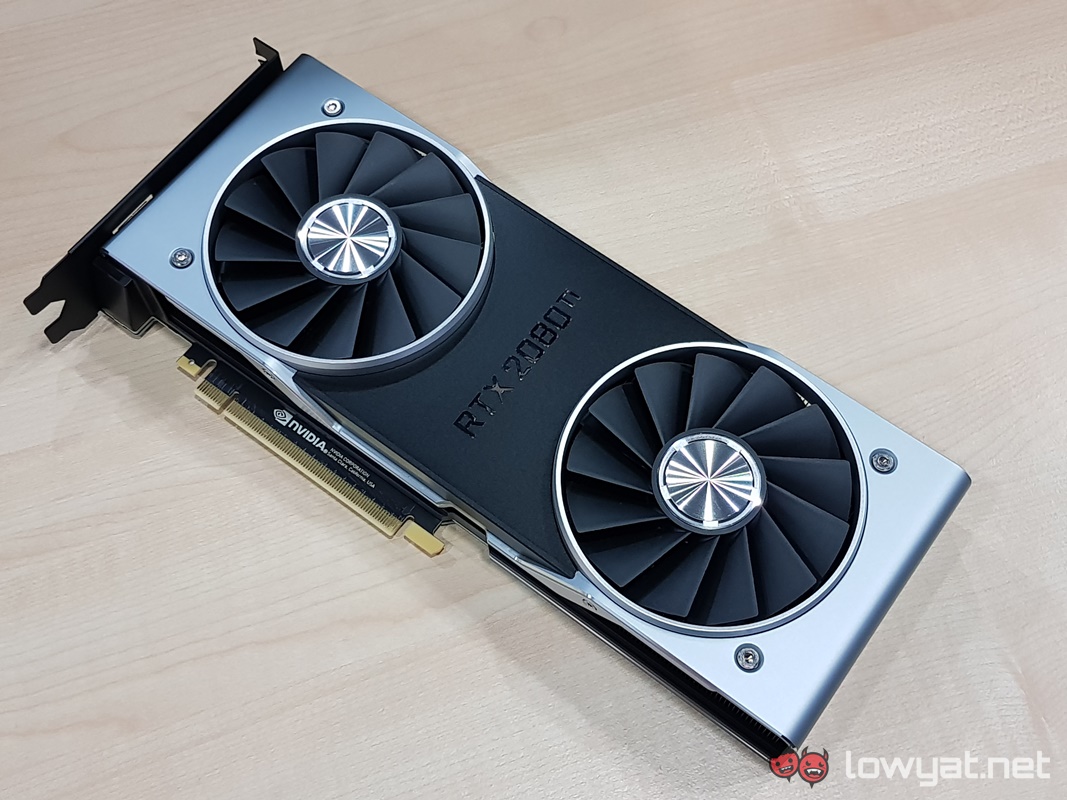The launch of the NVIDIA GeForce RTX series graphics card is a just a day away. Soon, PC gamers who had placed down their pre-orders for the GeForce RTX 2080 then, while those that pre-ordered the GeForce RTX 2080 Ti will need to wait an additional week. On that note, NVIDIA had sent us the Founders Edition of the RTX 2080 Ti earlier this week, thus giving us the opportunity to see first hand just how capable it is.
Based on NVIDIA’s Turing TU102 GPU architecture, the GeForce RTX 2080 Ti Founders Edition is the company’s current king of the hill graphics card. It features 11GB of GDDR6 memory that runs at 14Gbps, which in turn is spread across a 352-bit memory interface. Additionally, the card also comes with 4352 CUDA Cores, 72 Ray-tracing (RT) Cores, and 576 Tensor Cores for AI-related tasks and executions.
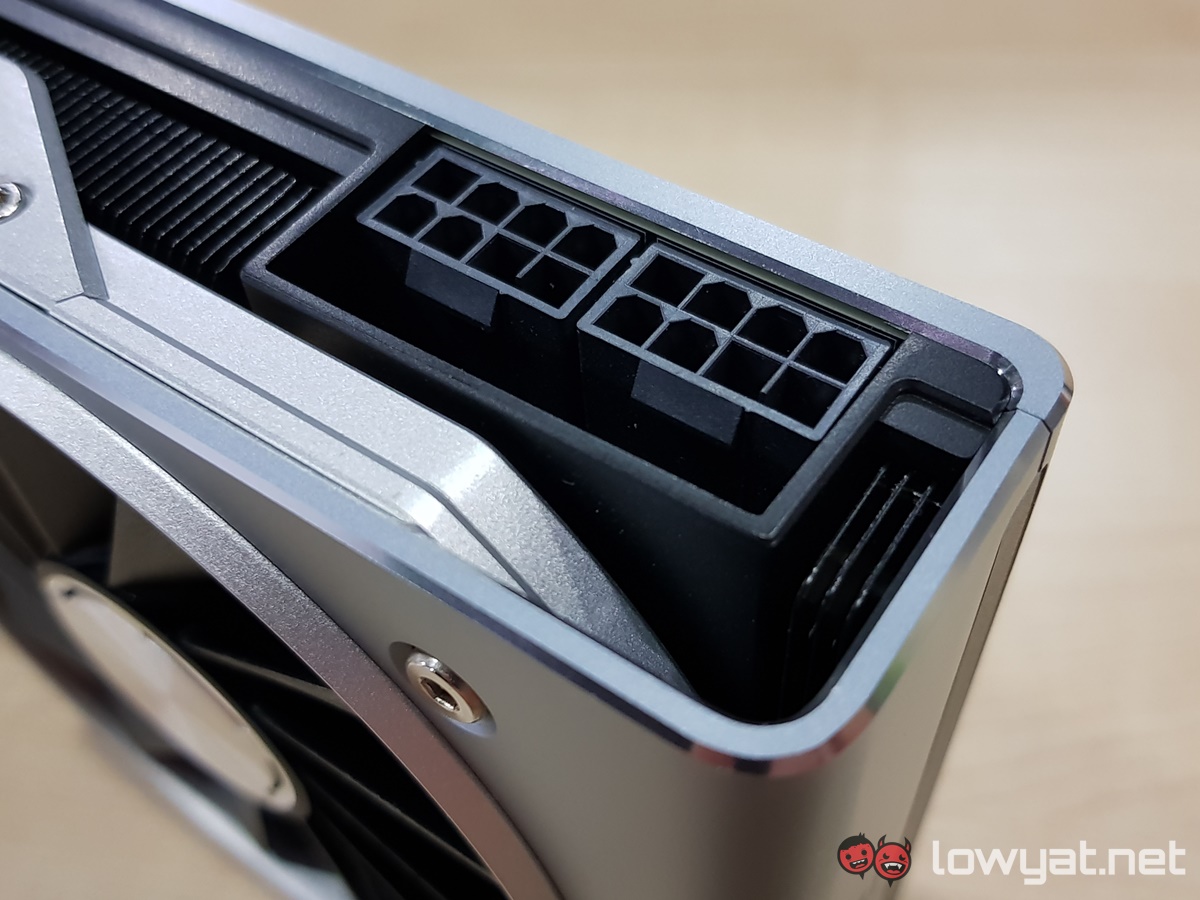
Ports-wise, RTX 2080 Ti Founders Edition has three DisplayPort 1.4 outputs, 1 HDMI 2.0b output, and a USB Type-C output for DirectLink support. To power up the card, you’ll require two 8-pin PCIe power connectors, and a 650W PSU as per NVIDIA’s recommendation.
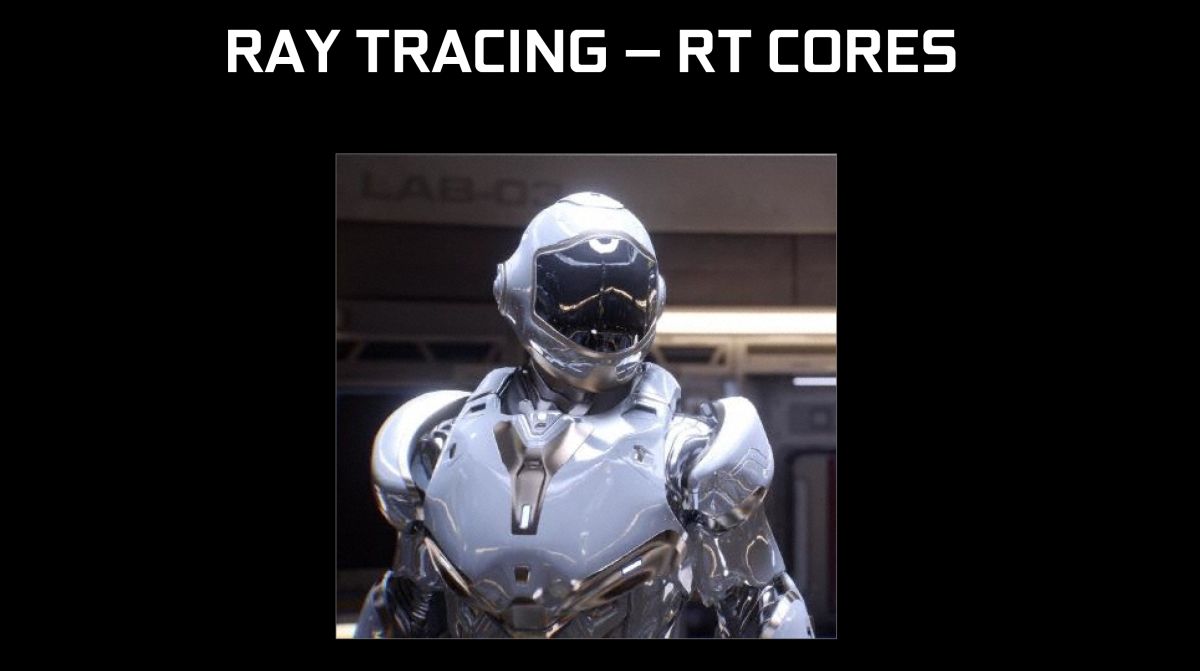
Of course, one of the newest and most anticipated features of the RTX 2080 Ti is its ability perform real-time ray-tracing inside the game via NVIDIA’s RTX technology. This new technology is intended to add both an extra level of depth by enabling light sources within game to react more realistically with the subject in comes into contact with.
That said, it should be pointed out that NVIDIA’s RTX technology isn’t going to be available for about a month, so you’re going to have to wait before you can take full advantage of the feature in games that already support it.
Moving on, let’s get straight what really matters: the RTX 2080 Ti’s overall performance as a graphics card. Below are specifications of the test machine used to benchmark the card:
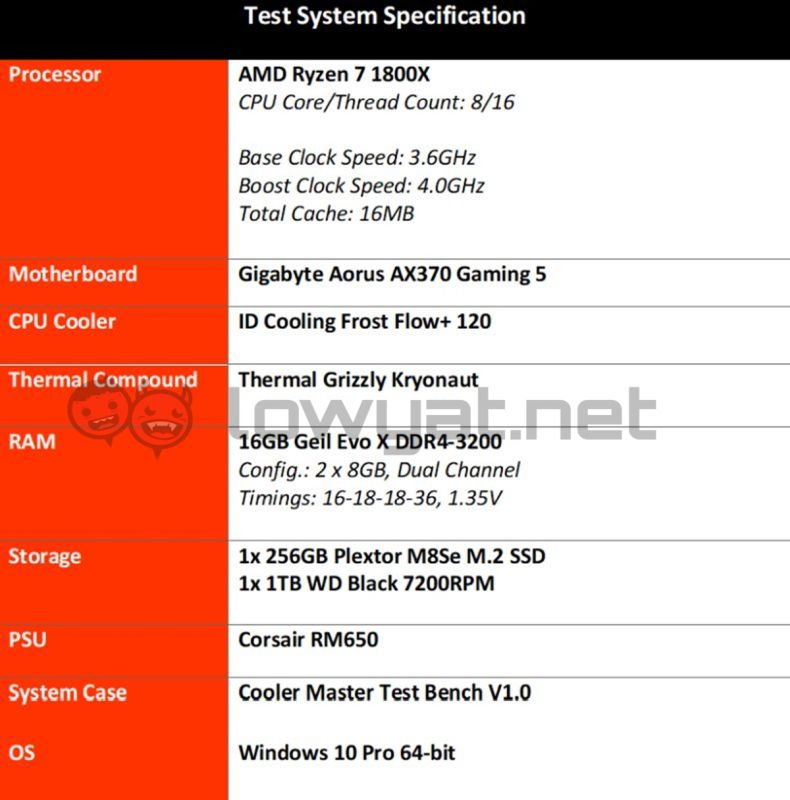
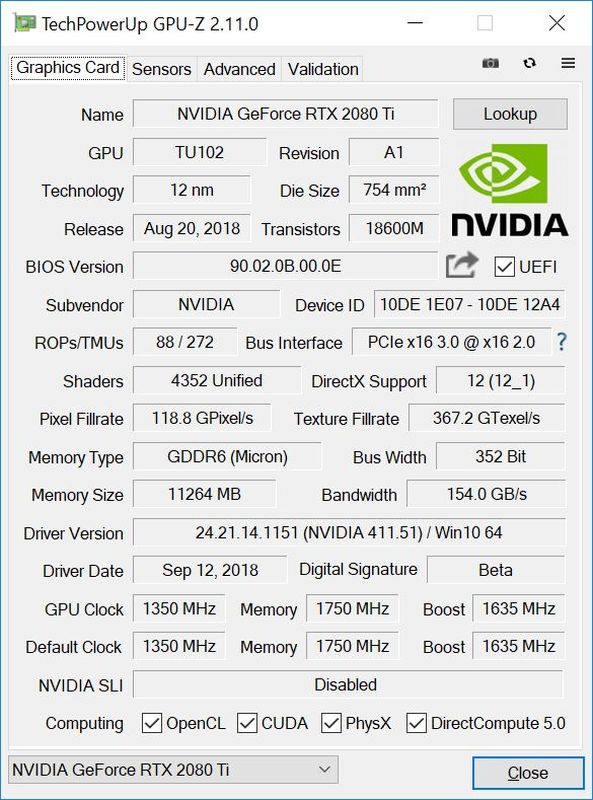
In order to test the RTX 2080 Ti Founders Edition, we simply used UL’s 3DMark benchmarks. Specifically, we ran Time Spy and Time Spy Extreme in order to see how well the card handled itself synthetically using the DirectX 12 API. The score we got were as listed below:
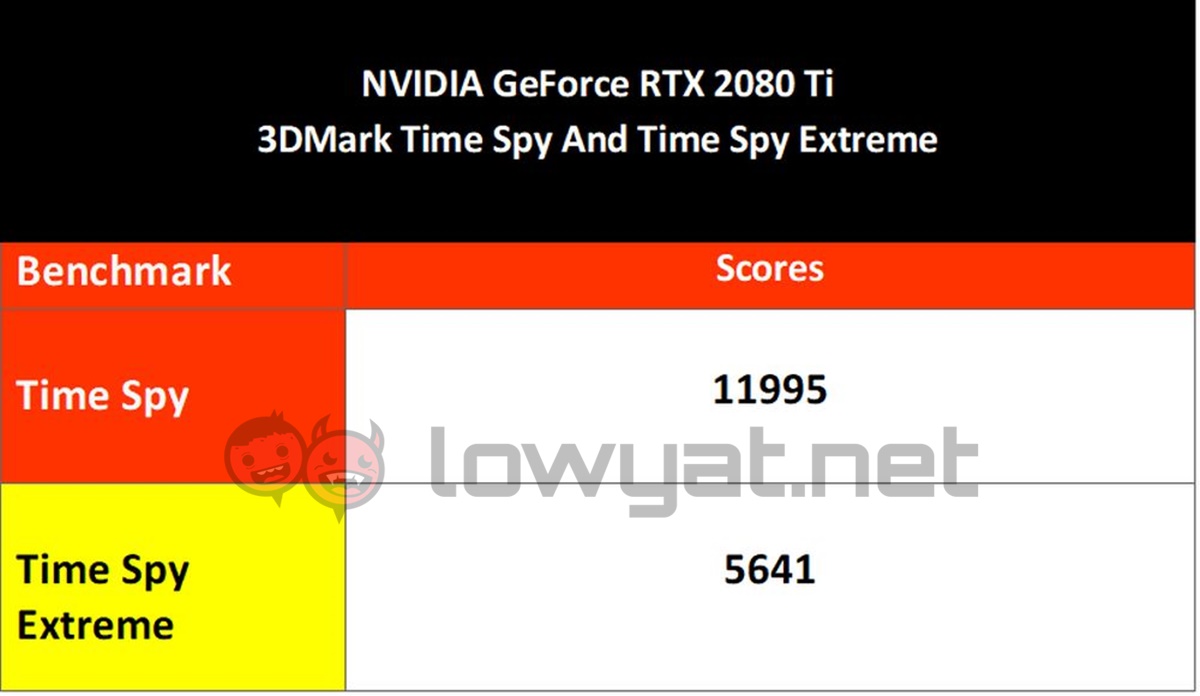
We also managed to test out the card’s real-world performance by running Square Enix’s latest Shadow of the Tomb Raider. On a side note, the game also happens to be one of the titles that will be able to benefit from the NVIDIA’s RTX technology when it becomes available. That said, we’ll definitely be revisiting the game when it does.
Moving forward, We benchmarked the RTX 2080 Ti Founders Edition in two resolutions: 4K (3840 x 2160) and 1440p (2560 x 1440). In addition, we also ran the game at those resolutions using the game’s three most demanding anti-aliasing presets: TAA, SMAAT x2, and SMAA x4. The results we obtained are as showed below:
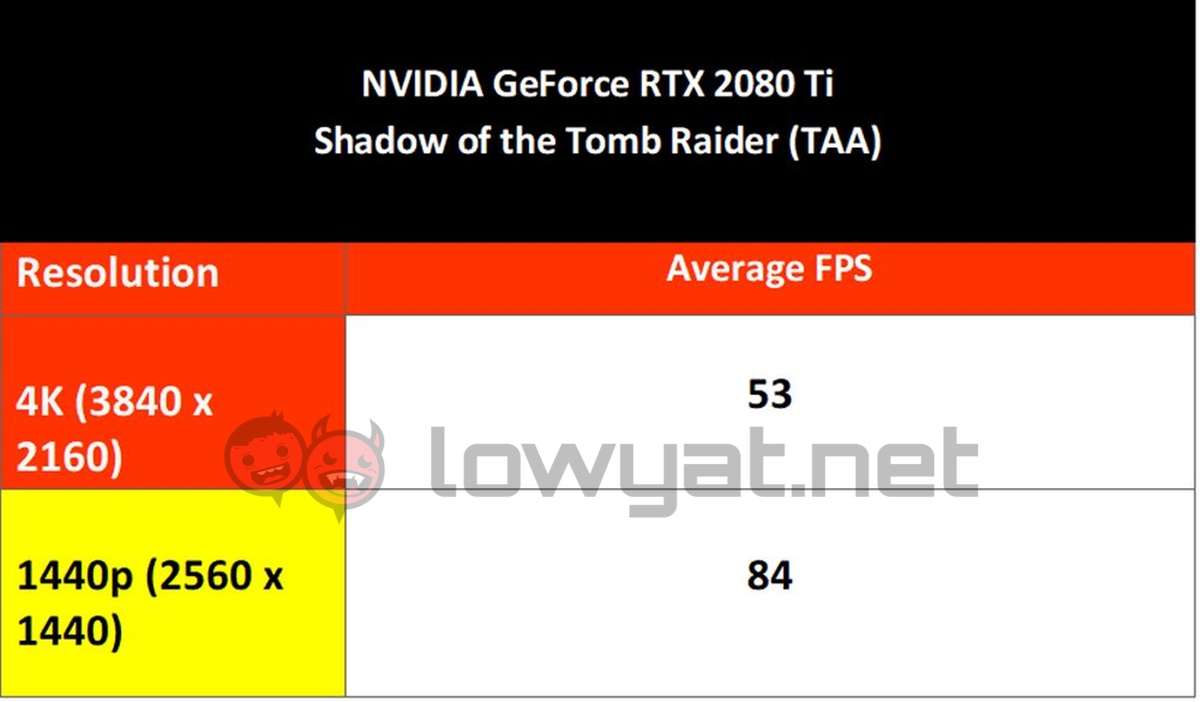
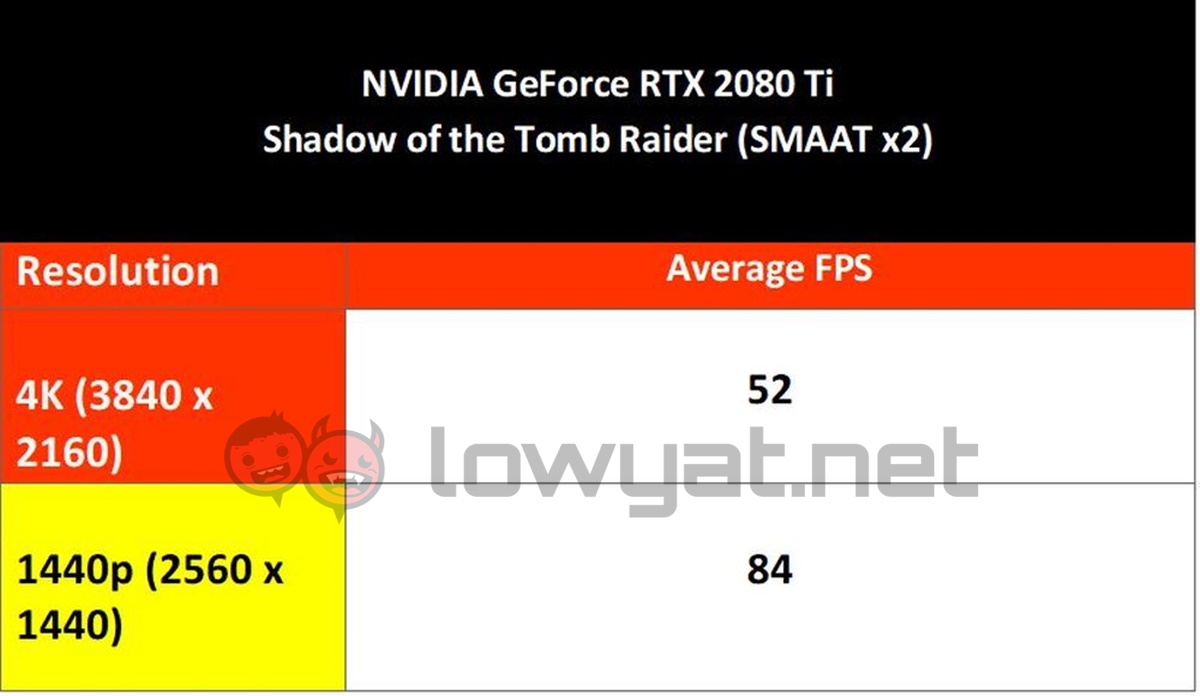
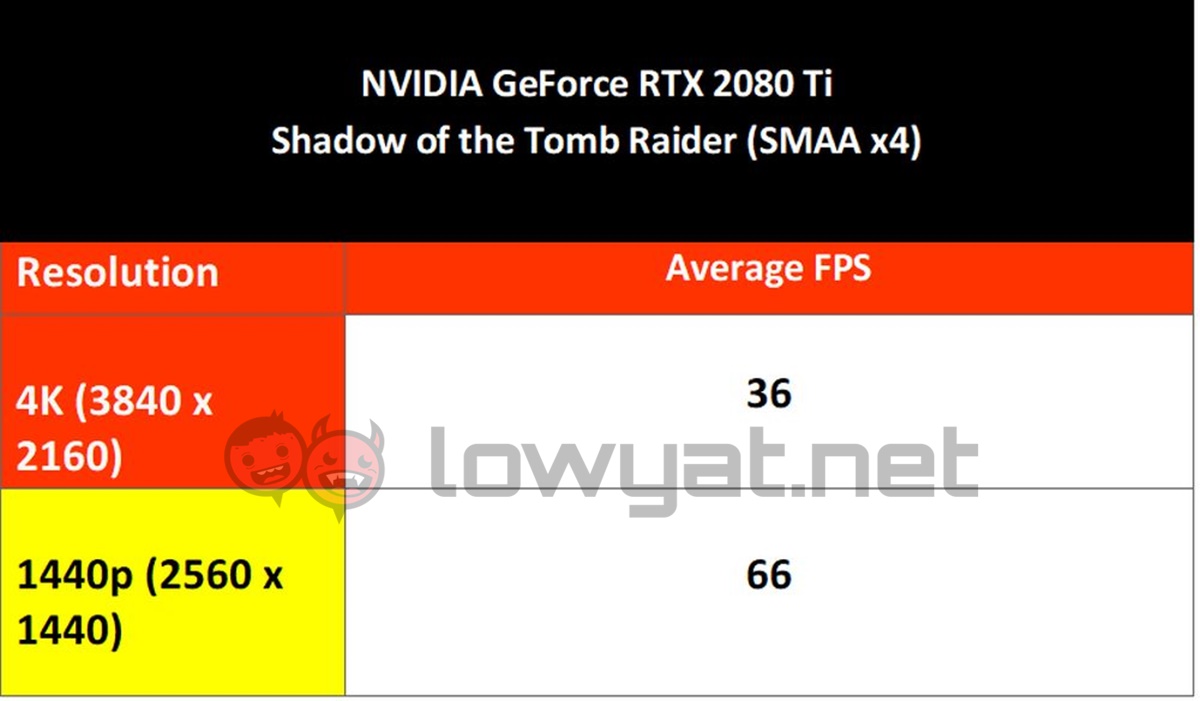
Needless to say, the scores we got from 3DMark’s Time Spy and Time Spy Extreme synthetic benchmark are nothing short of impressive. Statistically, the score for Time Spy Extreme is nearly double that of the GeForce GTX 1080’s performance in the same test, and approximately a 30% improvement in performance compared to the GTX 1080 Ti.
The story’s the same on Shadow of the Tomb Raider. With the exception of SMAA x4, the fact that the RTX 2080 Ti is able to sustain framerates beyond 30 fps at 4K resolution really speaks volumes of the card’s power. If that isn’t good enough, remember: the card has yet to be overclocked.
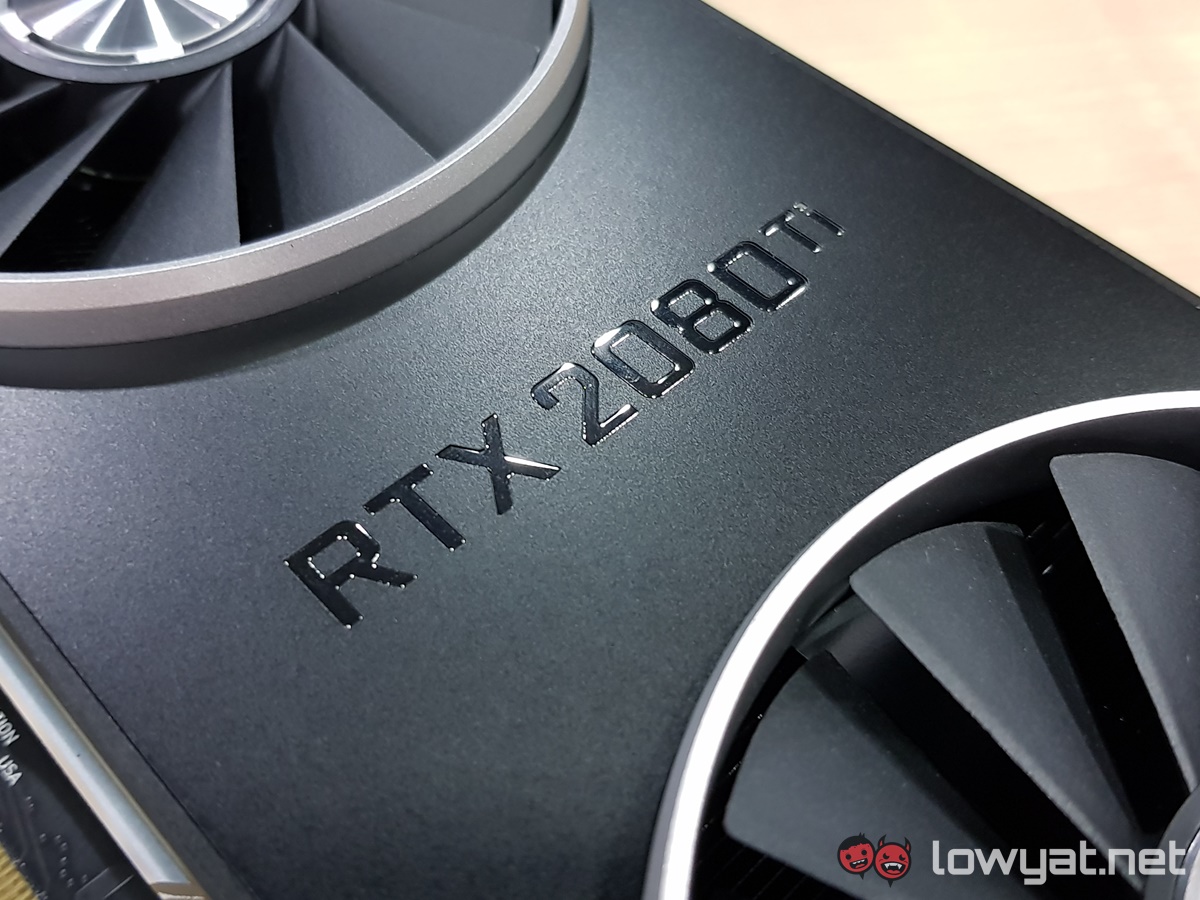
In any case, that’s just a glimpse of what the NVIDIA GeForce RTX 2080 Ti Founders Edition is capable of. We’ll be doing a full review of card that will include more benchmarks, its overclocking capabilities, and definitely more graphically-demanding game titles. So stay tuned.
Follow us on Instagram, Facebook, Twitter or Telegram for more updates and breaking news.


